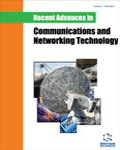Abstract
Background and Objective: Today, Wi-Fi technology is practically being used as a default connectivity solution for many new technologies and concepts like Internet of Things (IoT) and Smart City. The design of Wi-Fi network is a complex problem, where it is necessary to decide about the location and number of access points in given indoor or outdoor environment.
Method and Results: In this paper, the measurement results of Wi-Fi signal in the indoor-to-outdoor building environment are investigated and possible sources of signal loss in the examined Wi-Fi channel are pointed out and discussed. The influence of human hand signal absorption is examined by comparison of the measurements performed by professional equipment with the ones obtained by a smartphone. We considered different receiver positions as well as the change of transmitter antenna gain with respect to the receiver height.
Conclusion: The gain correction was estimated, and results showed a good agreement between the calculated and measured power levels at the receiver.
Keywords: Building surrounding, channel loss, human hand signal absorption, line of sight propagation, outdoor radio propagation, indoor radio propagation, radio measurements, spectrum analyzer, Wi-Fi signal.
Graphical Abstract
 9
9 1
1

